DETERMINE WHETHER EACH SET OF ORDERED PAIRS IS A FUNCTION OR NOT
Subscribe to our ▶️ YouTube channel 🔴 for the latest videos, updates, and tips.
Let A and B be two sets.
- A relation from set A to set B be a function if every element in set A is associated with at most one element of set B.
- No element should not have missing association.
Which of the following set of ordered pairs are functions ? Give reasons.
Problem 1 :
{(1, 3), (2, 4), (3, 5), (4, 6)}
Solution :
Given, {(1, 3), (2, 4), (3, 5), (4, 6)}
Let X be the set of inputs and Y be the set of outputs.
Inputs (X) = {1, 2, 3, 4}
Outputs (Y) = {3, 4, 5, 6}
Create a mapping of the following relation,
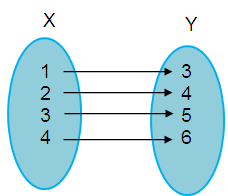
Form the arrow diagram, we understand that each x – value is being paired with only one y – value. So, this set of ordered pairs represents a function.
Problem 2 :
{(1, 3), (3, 2), (1, 7), (-1, 4)}
Solution :
Given, {(1, 3), (3, 2), (1, 7), (-1, 4)}
Let X be the set of inputs and Y be the set of outputs.
Inputs (X) = {1, 3, 1, -1}
Outputs (Y) = {3, 2, 7, 4}
Create a mapping of the following relation,
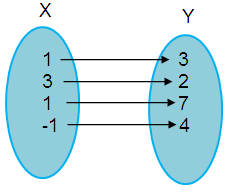
Form the arrow diagram, we understand that each x – value is being paired with only one y – value. So, this set of ordered pair represents a functions.
Problem 3 :
{(2, -1), (2, 0), (2, 3), (2, 11)}
Solution :
Given, {(2, -1), (2, 0), (2, 3), (2, 11)}
Let X be the set of inputs and Y be the set of outputs.
Inputs (X) = {2}
Outputs (Y) = {-1, 0, 3, 11}
Create a mapping of the following relation,
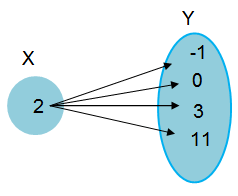
The input 2 has associate with more than one output .
So, this set of ordered pairs dose not represent a function.
Problem 4 :
{(7, 6), (5, 6), (3, 6), (-4, 6)}
Solution :
Given, {(7, 6), (5, 6), (3, 6), (-4, 6)}
Let X be the set of inputs and Y be the set of outputs.
Inputs (X) = {7, 5, 3, -4}
Outputs (Y) = {6, 6, 6, 6}
Create a mapping of the following relation,
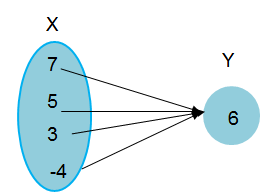
Every input is having output, no input is having more than one output. So, this set of ordered pairs represent a function.
Problem 5 :
{(0, 0), (1, 0), (3, 0), (5, 0)}
Solution :
Given, {(0, 0), (1, 0), (3, 0), (5, 0)}
Let X be the set of inputs and Y be the set of outputs.
Inputs (X) = {0, 1, 3, 5}
Outputs (Y) = {0, 0, 0, 0}
Create a mapping of the following relation,
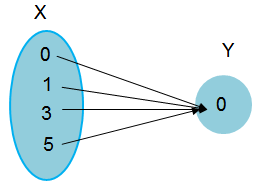
Each input is associated with outputs. No input is having more than one out put. So, it is a function.
Problem 6 :
{(0, 0), (0, -2), (0, 2), (0, 4)}
Solution :
Given, {(0, 0), (0, -2), (0, 2), (2, 11)}
Let X be the set of inputs and Y be the set of outputs.
Inputs (X) = {0}
Outputs (Y) = {0, -2, 2, 4}
Create a mapping of the following relation,
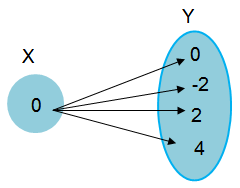
Input 0 is having more than one output. So, this set of ordered pair doesn't represent a function.
Subscribe to our ▶️ YouTube channel 🔴 for the latest videos, updates, and tips.
Recent Articles
-
Finding Range of Values Inequality Problems
May 21, 24 08:51 PM
Finding Range of Values Inequality Problems -
Solving Two Step Inequality Word Problems
May 21, 24 08:51 AM
Solving Two Step Inequality Word Problems -
Exponential Function Context and Data Modeling
May 20, 24 10:45 PM
Exponential Function Context and Data Modeling